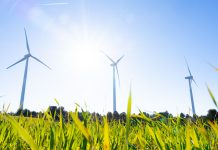Rithima Warrier from Frost & Sullivan sheds light on UN strategies driven by innovation, with a specific focus on addressing water crises in the face of climate change
Global water consumption has been consistently increasing at about 1% annually since the 1980s. (1) However, only 0.5% of water on earth is in useable form to cater for this increased consumption. (2) The United Nations (UN) reports highlight that global warming associated with climate change is worsening water availability by rapidly shrinking glaciers and ice caps, which are significant sources of water for river systems, especially in lowland areas.
The Intergovernmental Panel on Climate Change (IPCC) predicts that the Arctic sea cover is expected to melt entirely at least once before 2050, (3) contributing to a significant increase in sea levels and further shortage of usable water. The variability in water availability is directly impacting the drinking water supply and affecting major industries like agriculture and energy that heavily depend on consistent water supply. Lack of water in such industries can, in turn, lead to food and power shortages. The pivotal role of water makes it one of the most critical climate-impacted resources.
Infrastructure upgrades and resilience strategies for flood impacts
The changes in frequency and intensity of water are evidently observed in more than 20% of the world’s basins, which either have alarmingly high water surface area indicative of flooding or dried lakes or reservoirs due to inadequate water surface area. (4) The State of Climate Services 2021 report further highlights that flood-related disasters rose by 134% in comparison to the previous two decades, and regions like Asia with poor warning systems were affected the most. (5)
Floodwaters often carry contaminants such as faecal matter from flooded sewage systems and saline intrusion from coastal surges, which severely pollutes arable land and freshwater sources. In rural areas, this contamination can lead to the widespread destruction of crops and livestock, significantly impacting agricultural productivity and local food security.
The construction of rainwater retention basins and infrastructure modifications are the two most important strategies for reducing risks to high flood-prone areas. Roseville’s proactive efforts in managing flood risks include culverts, stream channel modifications, and elevated properties, which have effectively reduced the floodplain size and mitigated flood risks.
Government agencies have also been actively involved in developing preventive and resilience strategies, like the U.S. Federal Emergency Management Agency’s (FEMA) Risk MAP (mapping, assessment, and planning) process.
Enhancing natural water retention and smart water management
The increase in the number of warmer months is leading to earlier snowmelts, exacerbating water scarcity during dry months and resulting in droughts. Such drought conditions lead to increased irrigation costs and poor crop yields, thereby affecting food security and economic loss to countries. In the U.S., the average cost incurred during each drought event exceeds $9.6 billion. (6) In the last two decades, the frequency and duration of droughts have increased, resulting in deaths in continents like Africa that already face water shortages at alarmingly high levels.
The lack of water availability in urban areas with high hard water content increases the concentration of minerals in the water, leading to scaling phenomena. These deposits can reduce the diameter of pipes, further restricting water flow. The scaling problem is exacerbated during drought conditions and, in extreme cases, results in pipeline bursting, affecting the entire water distribution system.
To mitigate the effects of droughts, it is crucial to supplement conventional methods like rainwater harvesting and water conservation with smart solutions like the cultivation of drought-tolerant crops and the reuse of greywater for agricultural irrigation. These methods should be further supported by government initiatives to restore peatlands, wetlands, and forests to enhance landscapes’ ability to store water, thereby mitigating the effects of droughts.
Innovative technologies for managing the water crises
Water scarcity is expected to worsen due to factors such as population growth and unsustainable consumption patterns particularly in urban areas. The UN World Water Development Report 2023 states that the urban population facing water shortage is expected to double from 2016 levels, affecting approximately 1.7 to 2.4 billion people by 2050. (7) To minimise both the social and economic impact of water unpredictability and to achieve water security, the UN has suggested four primary strategies:
• Incorporating water management in climate policy: Incorporating water management into climate policy is crucial for adapting to reduced freshwater availability due to global warming. This also highlights the importance of resilient infrastructure to manage extreme weather events.
• Enhancing transboundary water cooperation: Currently, only six out of 468 shared aquifers internationally have formal cooperative agreements. More such agreements are needed to manage the international water resources effectively.
• Promoting partnerships and financing mechanisms: Various stakeholders involved in the water usage value chain can contribute to obtaining shared benefits. Initiatives such as water funds demonstrate successful models in which downstream users, such as cities, businesses, and utilities, invest in upstream conservation to enhance water quality and availability.
• Inclusive stakeholder participation: Engaging community members in the planning and management of water systems ensures that the services are tailored to the needs of the communities.
Governments and organisations can tackle climate change more effectively by focusing on the strategies mentioned above. These strategies can be implemented using innovative technologies such as artificial intelligence (AI) and blockchain. For instance, the utilisation of IoT (Internet of Things) sensors and AI-driven platforms to optimise irrigation schedules based on weather conditions, soil moisture, plus plant water needs can help reduce water wastage. Similarly, communities can leverage blockchain for water management, ensuring transparent and efficient water distribution and usage tracking.
Scalable and cost-effective technologies shape the future of water management
While it is vital to leverage emerging technologies, the immediate focus must be on developing sustainable, cost-effective, and scalable technologies that offer effective water management while also supporting reduced carbon emissions. Climate-smart agricultural practices like drip irrigation and solar-powered pumps aid in the optimal utilisation of water while being cost and energy-efficient. Similarly, smart water meters that provide real-time data on water usage and leak detection offer a high return on investment.
Simple, sustainable, and scalable practices that include community engagement, like protecting wetlands and peatlands (that serve as carbon sinks), should also be some of the major focus areas for governments and local bodies. These areas have the potential to create impact at a much higher scale.
A holistic approach involving the classification of UN recommendations into short-, medium-, and long-term categories, each paired with a cost-effective and scalable innovative technology-based action plan, could be the way ahead. This method would allow organisations, governments and communities to achieve Sustainable Development Goals related to clean water and sanitation (SDG 6) and climate action (SDG 13).
References
1. https://www.unwater.org/publications/un-world-water-developmentreport-2019
2. https://library.wmo.int/viewer/57630/downloadfile=1278_en.pdf&type=pdf&navigator=1
4. https://www.unwater.org/publications/summary-progress-update-2021-sdg-6-water-and-sanitation-all
5. https://news.un.org/en/story/2021/10/1102162











